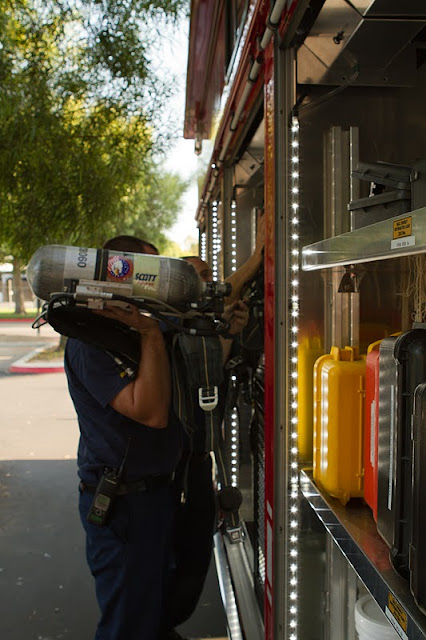When I first started in the fire service, Haz-Mat was a kind of new concept. Unless it appeared really, really dangerous, we pulled a booster line and hosed the offending substance down into the storm drain. Of course shortly after I came on, we realized that this was a flawed mitigation strategy and began operating a little differently.
Initially, we used the county for Haz-Mat service and it worked OK. As their awareness level increased, the sole Haz-Mat unit became busier and busier, until there were a few times where we had to wait quite a while for them to show up. It was then that we started our own Haz-Mat team.
As a young firefighter, I had images of green and orange vapor clouds of methyl-ethyl bad stuff spewing from railroad cars, which happened to be parked next to orphanage run by leperatic nuns. The Haz-mat team would pull up, quickly don their magic suits and rescue all of the orphans and nuns, carefully de-conning the victims and securing the leaking tank car.
After a few calls with the Haz-Mat team, I soon realized that this was not usually the case and that Haz-Mat calls were often exercises in slow, calculated, methodic responses - often to the point of tedium.
The Haz-Mat call of my career came shortly after I made captain, it did nothing to change my view of Haz-Mat calls and killed any remaining desire of joining the unit. More on this later.
I have been trying to get some incident photos of the Haz-mat unit for quite some time and have been largely unsuccessful. A few days ago, I thought I was finally going to score some good shots, but the incident turned out to be less intense than it initially sounded though I did snap a few pics.
The call involved some lab equipment that may not have been working as designed. The incident objectives were primarily to monitor the air and secure the equipment. Level B protection was selected as a precaution and it worked out well.
The initial objectives for any hazardous incident are to isolate, evacuate and deny entry. This facility had an emergency event procedure in placed and used it. It went pretty well. The employees were stoked as it was close to quitting time and they were allowed to leave early. Ya-hoo!
A few years ago, we were able to upgrade our converted motor home to a real-live, designed from the ground up Haz-Mat unit. It is full of toys and gadgets, most of which I have no knowledge of. One thing I do know about is the mast-mounted video camera which allows personnel inside the unit to see whats going on outside from afar. Unprofessional operators could really get into trouble with a toy like that, fortunately our glow worms are far too professional to fall into that trap!
Nothing like wrapping yourself up in a plastic bag on a 94 degree day! At least they were able to park in the shade, the other side of the rig was probably ten degrees warmer.
Even when the situation is not critical, rule and procedures must be followed. The guy with the clipboard is using a checklist to ensure all of the critical bases are covered.
After the walk from the Haz-Mat unit to the exclusion or "red" zone the entry team members make the final preparations and get ready to go in. The last thing that they will do is go "on air".
The worms go in, the worms go out. Total time in the hot zone was less than 10 minutes. All indications were normal, imagery was sent back to the entry team leader and then to the lab supervisor who verified the findings. The offending lab equipment was secured and verified by the lab supervisor. There was no release, so decontamination was not required. Stick a fork in 'em they're done.
Well, done except for putting everything away.
Maybe my next post will have some great shots of the orphans and nuns being rescued or huge orange and green vapor clouds spewing from a tank car. Or not. Regardless, this will have to do.
Thanks for reading,
Schmoe
Thursday, September 22, 2011
Subscribe to:
Post Comments (Atom)










No comments:
Post a Comment